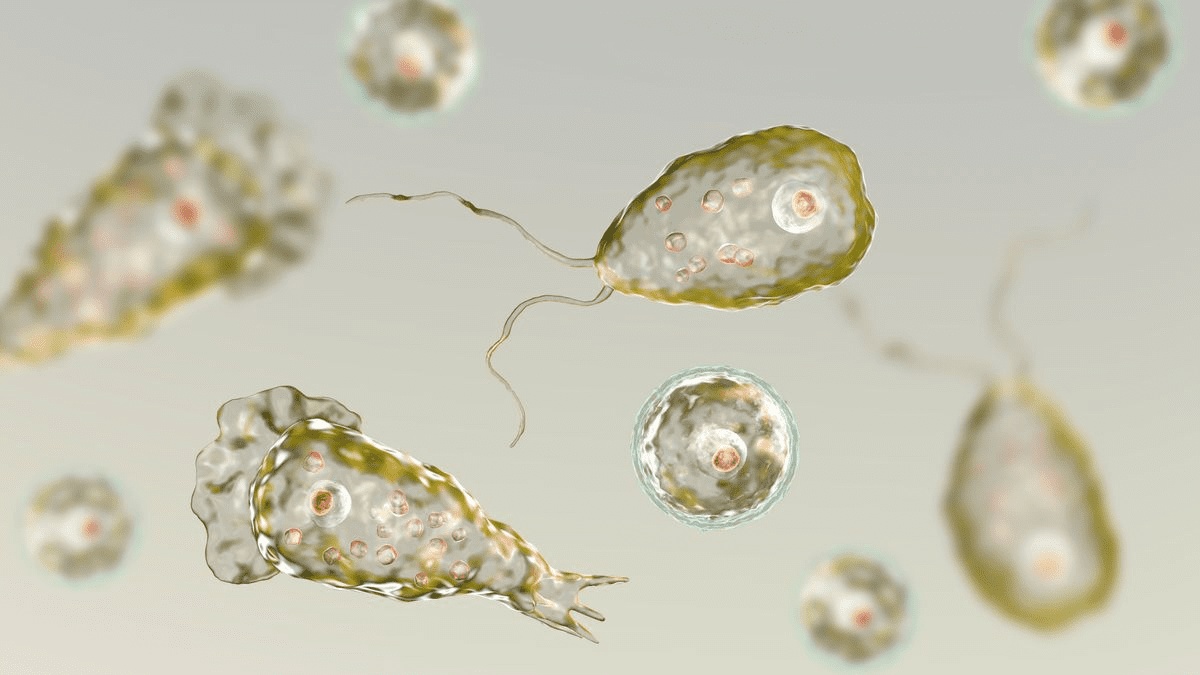
Unveiling the Deadly Intruder: Understanding Brain-Eating Amoeba
In the realm of microscopic life, few organisms evoke as much fear as the brain-eating amoeba. Known scientifically as Naegleria fowleri, this terrifying protozoan has gained notoriety for its association with severe illness and, in many cases, fatal outcomes. But what exactly is this organism, how does it enter our bodies, and what can we do to protect ourselves from it? In this article, we will explore the fascinating yet frightening world of the brain-eating amoeba, demystifying its biology and shedding light on preventative measures.
What Is the Brain-Eating Amoeba?
The brain-eating amoeba, or Naegleria fowleri, is a free-living amoeba found in warm freshwater environments, such as hot springs, lakes, and poorly maintained swimming pools. It thrives in temperatures ranging from 25°C to 45°C (77°F to 113°F), making it particularly prevalent in warmer climates. Despite its daunting nickname, it is crucial to understand that Naegleria fowleri is not harmful when ingested; rather, it poses a grave threat when it enters the body through the nose.
This organism is typically found in soil and warm waters. It can also survive in chlorinated pool water if the levels are not adequately maintained. The majority of infections have been reported in places like the southern United States, especially during the summer months when water temperatures rise.
How Does Infection Occur?
Infection with the brain-eating amoeba occurs when contaminated water enters the nasal cavity, often during recreational water activities like swimming, diving, or water sports. Once the amoeba penetrates the nasal mucosa, it travels along the olfactory nerve into the brain, leading to a severe and rare condition known as primary amoebic meningoencephalitis (PAM).
Symptoms of PAM usually appear within one to two weeks after exposure and can initially resemble those of bacterial meningitis, including headache, fever, nausea, and vomiting. As the infection progresses, it can cause more severe neurological symptoms, such as stiff neck, confusion, seizures, and hallucinations. Unfortunately, PAM is almost always fatal; statistics indicate a survival rate of less than 5%. This stark reality amplifies the urgency for awareness and prevention.
Recognizing the Symptoms of PAM
Given the rapid progression of symptoms associated with PAM, it is essential to recognize the early warning signs. Initial symptoms often resemble the flu or a viral infection. Here are some common symptoms to watch for:
- Fever: Often the first sign, paired with other flu-like symptoms.
- Severe Headache: A sudden and intense headache that worsens over time.
- Nausea and Vomiting: Accompanied by feelings of dizziness and a general sense of malaise.
- Stiff Neck: A hallmark symptom of meningitis.
- Altered Mental Status: Confusion, disorientation, and hallucinations may occur as the infection progresses.
- Seizures: More likely in advanced stages of the disease.
If you or someone you know experiences these symptoms following recent exposure to warm, contaminated water, seek medical attention immediately. Early diagnosis and treatment can be critical, though, as mentioned, outcomes are often grim.
Prevention: Safeguarding Yourself Against the Brain-Eating Amoeba
Understanding how to protect yourself from Naegleria fowleri is key to reducing the risk of infection. While the odds of encountering the brain-eating amoeba are quite low, particularly in areas without a history of PAM outbreaks, certain precautions can enhance your safety during water-related activities:
- Avoid Warm Freshwater: If possible, steer clear of swimming in warm lakes and hot springs, especially during high-temperature months. Choose well-maintained pools instead, where water quality is regularly monitored.
- Keep Water Out of Your Nose: While participating in water sports or swimming, consider using nose clips or keeping your head above water to avoid water entering your nostrils.
- Ensure Proper Pool Maintenance: If you own a pool, maintain proper chlorine levels and regularly clean the water to keep it safe. Aim for a pH level between 7.2 and 7.8 and ensure sufficient free chlorine concentration.
- Educate Others: Raise awareness about the risks associated with the brain-eating amoeba among friends, family, and peers. Knowledge is a powerful tool in preventing infections.
- Consult Local Health Advisories: Stay informed about local water quality reports, especially before swimming in natural bodies of water during warmer months.
Conclusion: Navigating the Threat of the Brain-Eating Amoeba
The brain-eating amoeba may seem like a villain out of a horror story, but understanding its biology and the circumstances leading to infection can empower us to stay safe. By recognizing the conditions that foster the amoeba’s growth and adhering to preventive measures, we can effectively reduce our risk of encountering this deadly intruder.
If you ever find yourself swimming in warm waters, remember these precautions: prioritize your safety, pay attention to early symptoms, and act swiftly if exposure occurs. Awareness and preparation are our best defenses against the brain-eating amoeba, ensuring that we can continue to enjoy our aquatic adventures without fear.

















